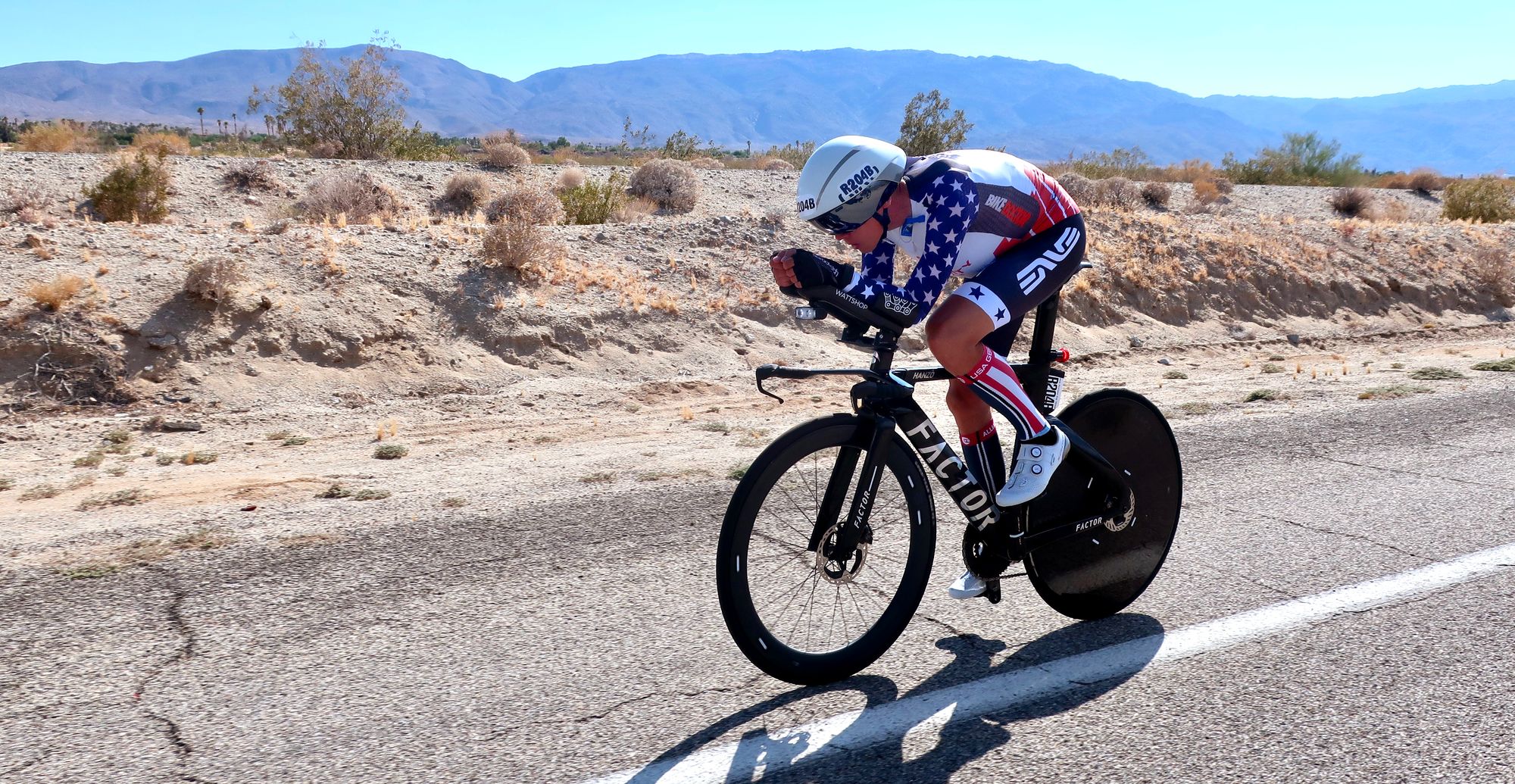“Race Across the West” is an ultra cycling race that goes from Oceanside, California to Durango Colorado, following the Race Across America route through four states. It can be completed as an individual or in teams of 2 or 4 people, and Ryan Collins, along with his team mate Marko Baloh, did just that, winning and breaking the record along the way by well over 2 hours.
For those who have listened to our podcast with Ryan, it should come as no surprise that his nutrition was DIALED IN and ON POINT given his background and meticulous nature.
The Race Details:
The race was 930 miles and the guys completed it in 44:20 (yes, just under 2 days!), as mentioned, a new record.
They split the cycling up into efforts of between 20 and 40 minutes, which meant roughly the same amount of time to eat and get whatever sleep they could before their next full throttle effort.
This strategy of shorter, more intense efforts, no doubt helped minimize the feeling of isolation, monotony and prevented the guys cooling down too much between efforts whilst also allowing them to recover between efforts. It also kept the average speed quite high.
The Fueling Details:
Ryan’s approach to his prior racing is something we discussed in the podcast linked above, the approach to this event, however, is much different to a 6 or even 12 hour event. The intermittent nature of it, the prolonged nature of it and the fact it traversed two evenings (leading to circadian changes) were some of the factors Ryan would need to account for. This also complicates priming significantly.
Broadly speaking, designing a fueling plan for an ultra endurance event means it will be lower intensity (as discussed above this may not be as true as normal in this case where things ended up more akin to a prolonged period of 20-40 min intervals than anything else) and thus fueling planning changes. Approaches often include more protein and real food than they would in shorter duration races.
Even being as meticulous as Ryan, nutritional tracking during an event like this is at best a little imprecise given the nature of everything. Nonetheless, you’re here for it so here we go.

Ryan averaged around 58g/hr of carbohydrates for the full event. BUT, and this is where it gets interesting and insightful, Ryan front loaded solids and intake in general, when his stomach was better able to tolerate it and then eased off a bit as things progressed (and moved more towards liquids).



As seen above, Ryan‘s carbohydrate intake averaged 92g/hr on day 1, 53g/hr on day 2 and 31g/hr on day 3. As mentioned, part of this was due to planning but part was due to some GI upset that Ryan experienced
Another interesting factor is Ryan’s use of Ketones, which some may question. There is some evidence, though, as discussed in the linked podcast they may provide a benefit alertness in ultraendurance performance.
The Glucose Details:
With a very cursory glance at the below glucose data, even the newest Supersapiens would be able to see the fluctuant pattern of glucose. As covered in this blog, these could be occurring for a number of reasons.
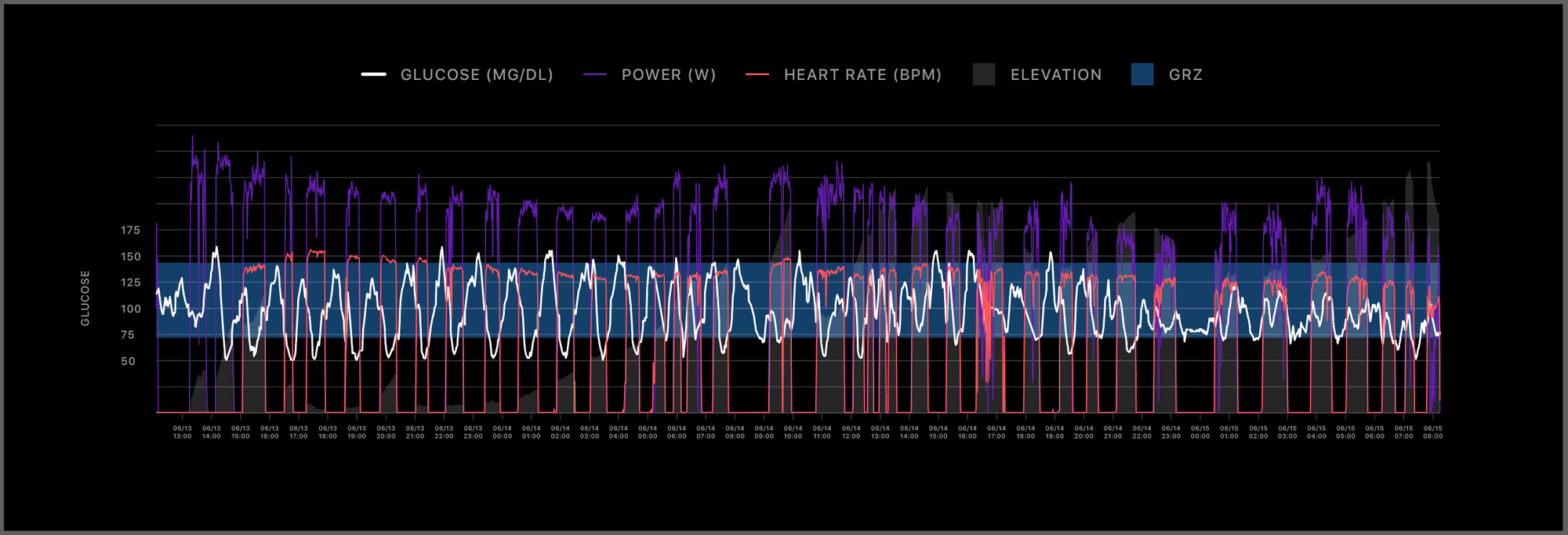
The pattern; for the first two days Ryan experienced increases in glucose whilst resting and fueling with reductions in glucose without exercise which may at first seem counterintuitive or perhaps even counter productive.
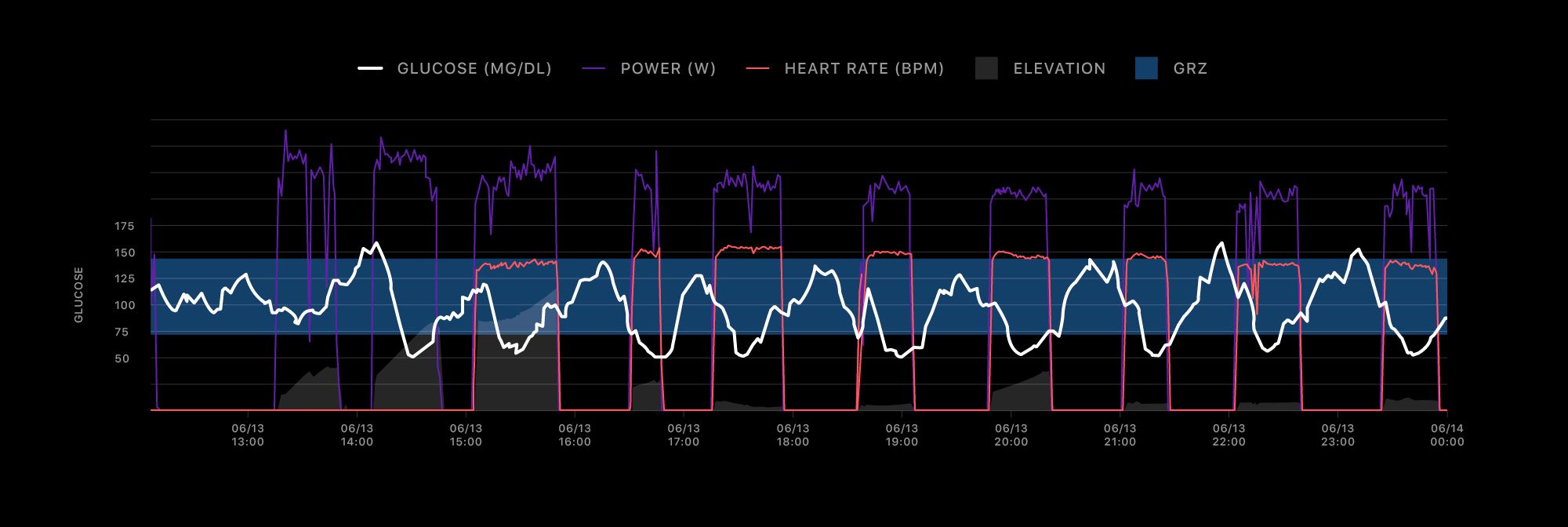
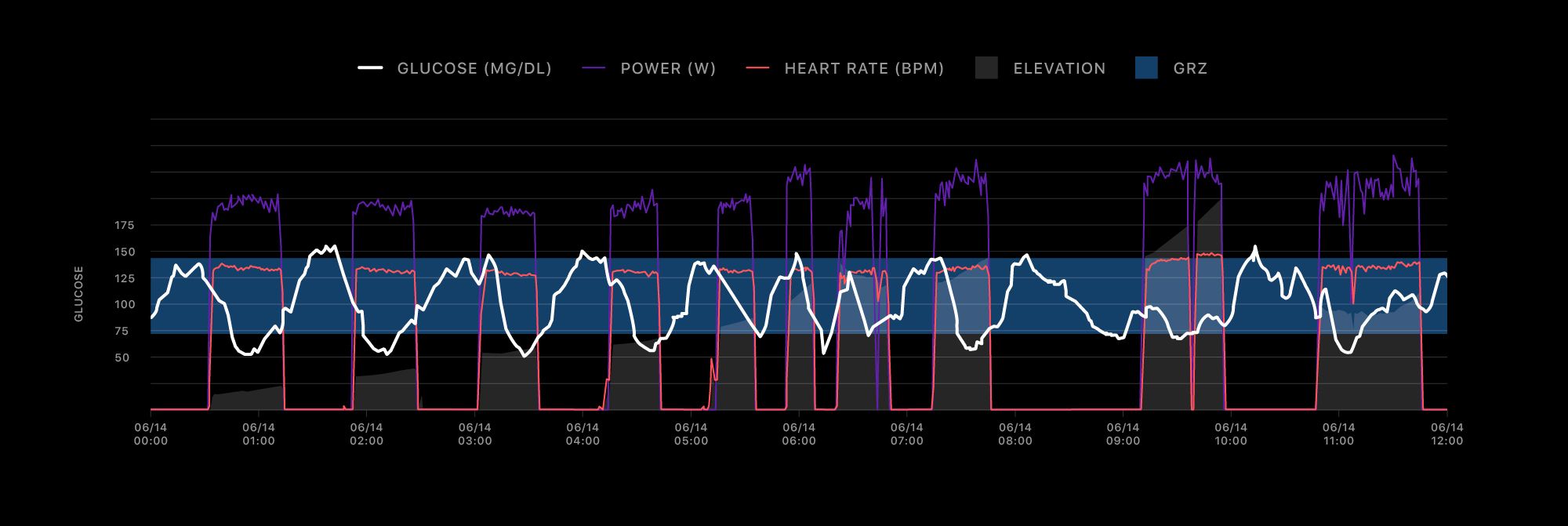

That said, there are a few things to consider in this evaluation:
- Glucose (as measured using a continuous glucose monitor) is an interstitial fluid reading - which shows the difference between delivery and utilization. So at times with little use and increased delivery it will go up and vice versa.
- Ryan was utilizing exogenous ketones regularly during the duration of the attempt, research is still in its infancy but in general, it is accepted that these would somewhat blunt glucose responses as well as provide another fuel source - perhaps this meant his glucose didn’t need to be as high and what some experienced users may expect (higher intensity efforts usually increasing glucose) was thus not present.
What was particularly interesting though, was that this pattern inverted on Day 3. This coincided with Ryan's fueling efforts becoming more difficult, due to the aforementioned GI issues and his intake reducing as a result. Of note, Ryan's glucose also got quite low towards the end of the 44 hours.
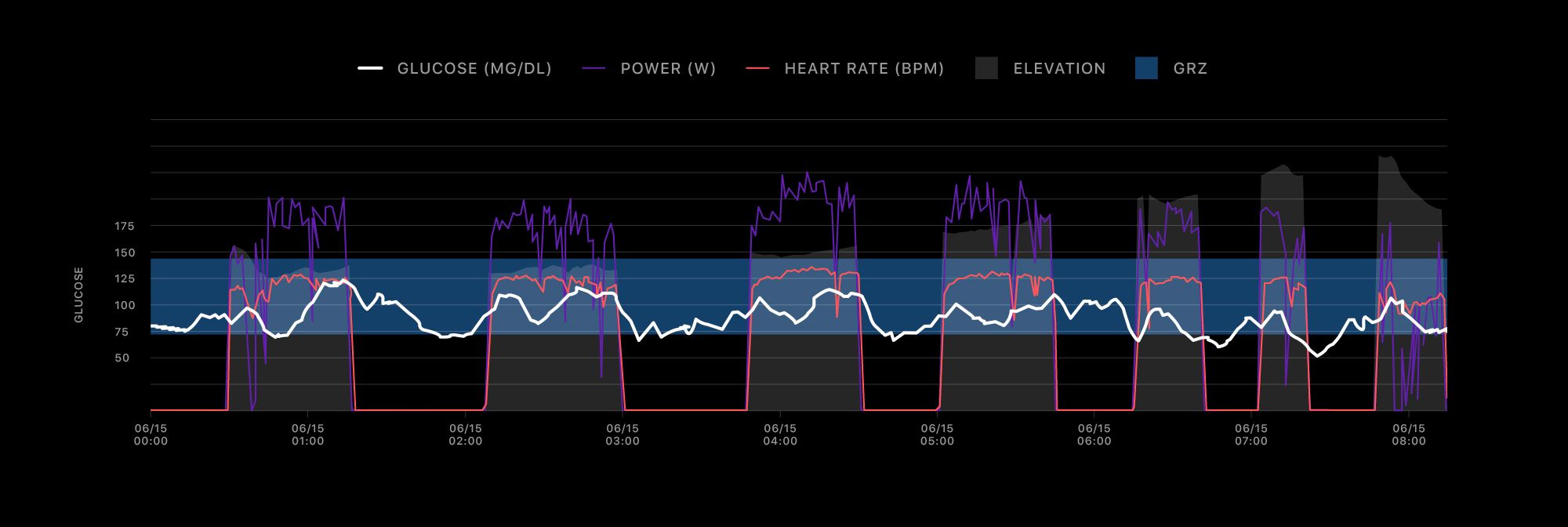
How did Ryan do from a Glucose Standpoint
The short answer is: “well”.
Aside from performance being great (which is the ultimate goal!). Ryan was able to continue his performance output, meaning he probably had sufficient glucose availability. The fact the slope of his glucose was relatively flat ie there was only a mild downward trend overall very late in the efforts, supports this also.
What Lessons can be Learned from Ryan’s Data
- Have a plan, but make sure you can adjust it as necessary, things like GI issues and flavor fatigue are a real risk in ultra endurance sport. On that note, make sure you train your gut ahead of time.
- If you’re tracking glucose, understand what drives it up and causes it to drop.
- Understand how to use your CGM data to evaluate your glucose data; you may not get into your GPZ unless you set it specifically for the event.
- Approach things progressively, as discussed in the podcast with Ryan and here.
If you enjoyed this, or you’re a cycling fan looking for more glucose in cycling information, check out our blogs on; Jack Thompson, Ronan McLaughlin, James MacDonald or Lauren De Crescenzo. If podcasts are more your style, we have you covered many cyclists as guest in episodes including; Tao Geoghegan Hart, Bobby Julich, Ashleigh Moolman-Pasio and Tsgabu Grmay just to name a few!
References:
Poffé C, Robberechts R, Stalmans M, Vanderroost J, Bogaerts S, Hespel P. Exogenous ketosis increases circulating dopamine concentration and maintains mental alertness in ultra-endurance exercise. J Appl Physiol (1985). 2023 Jun 1;134(6):1456-1469. doi: 10.1152/japplphysiol.00791.2022. Epub 2023 May 4. PMID: 37141424.
